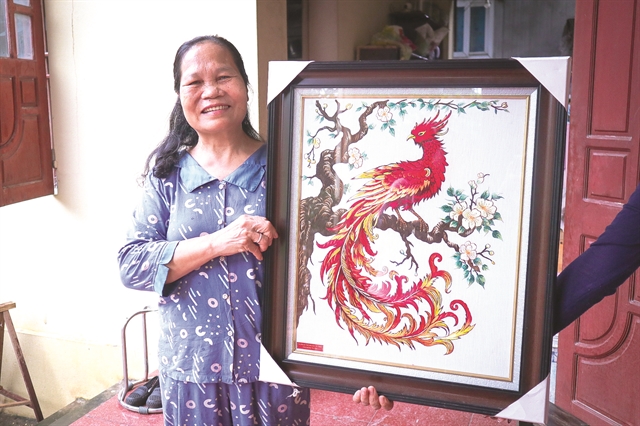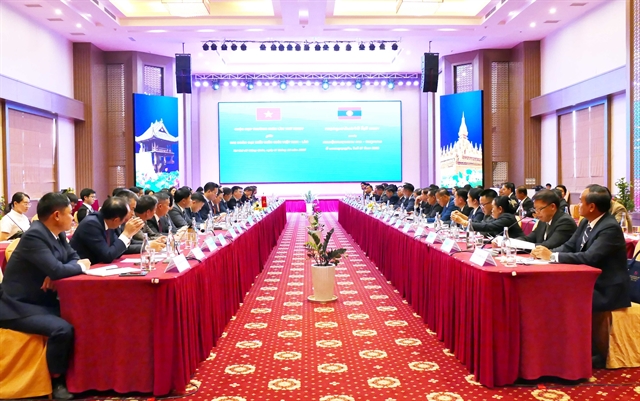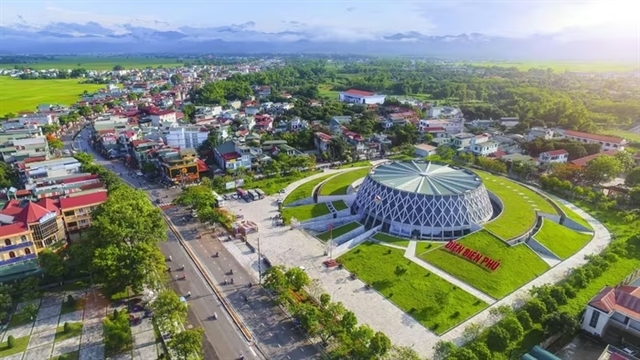 Features
Features

The poetic beauty, cool fresh air, diverse cultures, and local cuisine all work to attract tourists to Mai Châu District in northern Hòa Bình Province, 140km southwest of Hà Nội.
Kiều Trinh
.jpg)
|
| TOO QUIET: Thi Tho homestay used to be quite crowded but now has few guests. — VNS Photo Cao Ly Ly |
Twenty-year-old Lò Thị Bích Phương and her husband Hà Văn Thực, 29, opened their homestay in Nhót Village, Mai Châu District in the northern province of Hòa Bình, 140 km southwest of Hà Nội, in 2019.
To reach Mai Châu from the provincial capital Hòa Bình City, visitors must navigate the winding and challenging Kun Pass, with a length of 12 km. The higher it goes, the more majestic the scenery, with a blanket of white cloud often obscuring what’s down below.
At Thung Nhuôi Pass, visitors can take in the beautiful Mai Châu Valley, with stilt-houses nestled throughout an immense green space.
Mai Châu’s poetic beauty, cool fresh air, diverse cultures, and local cuisine all work to attract tourists. Just three hours by road from Hà Nội and they could be setting foot on the wooden stairs of a stilt-house in Mai Châu Valley and immersing themselves in the natural surroundings while exploring the lives of the Thái ethnic minority people.
“My parents-in-law bought this stilt-house for about VNĐ50 million, and we opened the homestay late last year,” Phương said.
It is ideal to have a homestay in a traditional stilt-house of the Thai, which is made of wood and is tall, clean, and airy. From there you can visit wonderful landscapes or discover Khoài, Láng and Chiều caves.
Mornings are the perfect time for a bicycle ride to neighbouring villages such as Lác, Poom Coọng and Văn, breathing in the fresh, tranquil air of the highlands.
Phương’s delicious traditional dishes and performances by Thái people make for a very pleasant evening.
She and her husband are one of five homestay owners in Nhót Village, which has more than a thousand households. Older and quieter, nearby Văn Village also has five homestays, while Lác, which is a more familiar tourism site, has more than 20.

|
| PATIENCE GAME: The popular destination of Ban Van is waiting for guests to come. — VNS Photo Kiều Trinh |
Guests, however, are hard to come by these days. “We had a fairly steady stream of visitors at the end of last year,” Phương explained. “But COVID-19 saw tourist numbers dry up.”
“COVID-19 made life very difficult,” agreed Hà Thị Nhung, the owner of the Thuyết Nhung homestay in Mai Hịch Village, 14 km away. “We used to host foreign guests every day, but now no one comes.”
Hà Công Minh, owner of the neighbouring Thi Thơ homestay, said no visitors had arrived since March.
“Homestays were booming, partly due to the policy from the People’s Committee of Hòa Bình Province on the development of community tourism, which targeted mobilising investment and encouraging local communities to participate in tourism activities, creating jobs and raising incomes for local ethnic minority people in the process,” said Đặng Tuấn Hùng, head of the local tourism management division.
“But the pandemic froze tourism, and most homestays are now deserted.”
“Our plans to welcome 3.5 million visitors in 2020 are no longer feasible,” Bùi Xuân Trường, deputy director of the Hòa Bình Department of Culture, Sports and Tourism, acknowledged.
“As of the end of the third quarter, we had only welcomed about 1.3 million visitors this year, or 51 per cent of the figure in the same period last year and 40 per cent of the annual plan. Earnings have only been 40.7 per cent of the annual plan.”

|
| PATIENCE GAME: The popular destination of Ban Van is waiting for guests to come. — VNS Photo Kiều Trinh |
"Hòa Bình has a scheme to revitalise the local tourism sector," he said.
"The first step is to ensure that pandemic prevention measures are implemented thoroughly. Second, the province will develop packages to attract visitors, including competitive products, additional services, and lower prices.
“The province is facilitating the implementation of tourism support packages by reducing electricity prices, extending tax and insurance payments, supporting employees, and cutting bank interest rates.
“At the same time, we continue to focus on attracting investors, reforming administrative procedures, and accelerating disbursement to complete tourism infrastructure works. The province also provides training courses for tourism teams.”
Hòa Bình’s focus is also on developing existing tourist sites and opening others.
“To attract all types of tourists, we are working on developing community-based tourism, putting our natural and cultural conditions to best use, as well as supporting high-end resorts such as Mai Châu Ecolodge Resort and Ba Khan Resort, which only opened last year,” Trường added.
Another area of investment attention is Hòa Bình reservoir, which is to basically meet the criteria of a national tourist area by 2025.
“By 2030, Hòa Bình reservoir will boast a range of modern facilities and high-quality tourism products, becoming the largest tourist centre in the province and one of 12 key tourist areas in the northern midlands and mountainous region,” he said.
As part of planning, key jetties on Hòa Bình reservoir are to be upgraded. The province will also build a port in Ngoi Hoa Commune, with the goal of building a tourist port in the Ngoi Hoa Bay area. From there, visitors can easily reach Sung Island and other spots with beautiful natural landscapes where eco-tourism and community-based tourism projects have been developed.
In order to connect destinations in Hòa Bình with each other and with partners in other provinces, it will pay great attention to completing road building projects.
The Hòa Lạc - Hòa Bình Highway has already shortened the distance from Hà Nội to Hòa Bình City to just over an hour by car. “The province is implementing two key road projects, including improving and upgrading Provincial Road 433 and Provincial Road 435,” said Trường.
“Once completed, Provincial Road 433 will connect the centre of Hòa Bình City with key communes in the core zone of the Hòa Bình reservoir national tourism area.”
“With support from the Government, the newly approved project to build the Hòa Bình - Mộc Châu (in Sơn La Province) Highway, in the form of a public-private partnership, will facilitate economic and social development in both areas. With a total length of 85 km, of which 49 km is in Hòa Bình Province, the road will present significant opportunities for local tourism development.” VNS




